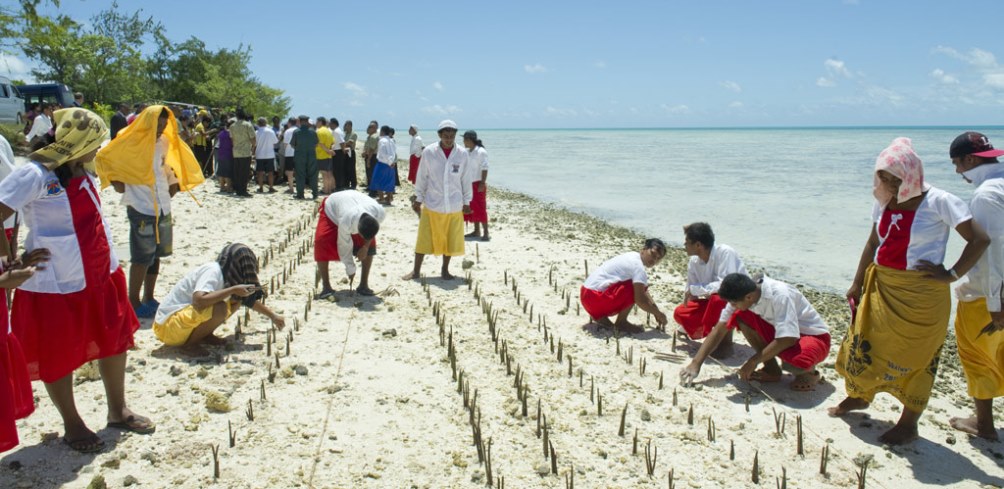On July 26, 2017 the UN Educational, Scientific and Cultural Organization (UNESCO) shone a spotlight on the unique role of mangroves in sequestering and storing significant amounts of coastal “blue carbon” from the atmosphere and ocean, which is crucial for mitigating climate change. (Blue carbon is the carbon stored in coastal and marine ecosystems.)
Coastal mangroves are among the most imperiled ecosystems on earth, with current estimates indicating that up to 67 per cent have been lost to date, according to the United Nations science wing.
UNESCO is deeply engaged in supporting the conversation and restoration of mangroves, while advancing the sustainable development of local communities who interact closely with mangroves and depend on their goods and services.
“The stakes are high, because mangrove ecosystems provide benefits and services that are essential for life,” said Irina Bokova, Director-General of UNESCO, in a message on the International Day for the Conservation of the Mangrove Ecosystem.
She underscored that UNESCO is also leading an active role in the Blue Carbon Initiative to mitigate climate change through the conservation, protection, restoration, and sustainable use of coastal and marine ecosystems, focusing on mangroves, tidal marshes and seagrasses. “We must do far more and this calls for stronger science,” she exhorted.
“From advancing food security, sustaining fisheries and forest products and offering protection from storms, tsunamis and sea level rise to preventing shoreline erosion, regulating coastal water quality and providing habitats for endangered marine species – the list is long on the importance of mangrove ecosystems,” she added.
While healthy mangrove ecosystems are vital, Ms. Bokova pointed out that “nearly all unprotected mangroves could perish over the next 100 years.”
Through its “Man and the Biosphere Programme“, its International Hydrological Programme, its Intergovernmental Oceanographic Commission, and the Local and Indigenous Knowledge Systems Programme, UNESCO is drawing on all of its strengths to protect and restore mangrove ecosystems.
“This action reaches across the world, from the Bosque de Paz transboundary biosphere reserve in Ecuador and Peru, and the Delta de Saloum Biosphere Reserve in Senegal to the Langkawi UNESCO Global Geopark in Malaysia,” the Director-General elaborated.
To this end, UNESCO is working to broaden the capacities of States and reinforce their scientific knowledge, especially in countries that are highly dependent on these ecosystems in Africa and small islands development States, always working with local communities, always drawing on indigenous knowledge.
This Day provides “the moment for everyone to redouble their commitment to the 2030 Agenda for Sustainable Development and the Paris Climate Agreement,” said Ms. Bokova.
“UNESCO’s message today is clear – we must reverse the trend of degradation and protect the mangroves that are so essential to the health of the planet,” concluded the Director-General.
The International Day, commemorated annually on 26 July, aims to raise awareness of the valuable services provided by mangrove ecosystems.
Feature photo of mangrove restoration on the Tarawa atoll of Kiribati (2011) courtesy of Eskinder Debebe/UN.
See the Blue Carbon Initiative website.
See the UN News Centre website.

